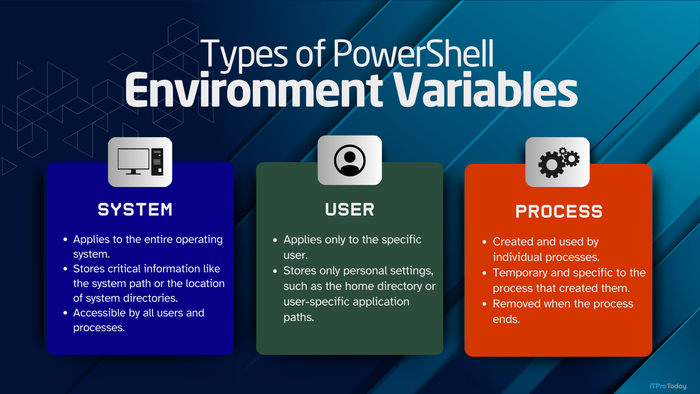How Tech Companies Are Obscuring AI's Real Carbon FootprintHow Tech Companies Are Obscuring AI's Real Carbon Footprint
Tech giants leading the AI race have found a way to conceal the climate impact of their growing electricity use: unbundled renewable energy certificates.
August 21, 2024

(Bloomberg/Akshat Rathi and Natasha White) — Tech companies' relentless push into artificial intelligence is coming at an undisclosed cost to the planet. Amazon, Microsoft and Meta are concealing their actual carbon footprints, buying credits tied to electricity use that inaccurately erase millions of tons of planet-warming emissions from their carbon accounts, a Bloomberg Green analysis finds.
Recently Microsoft reported that its emissions are 30% higher today than in 2020, when it set a goal to become carbon negative. Other tech companies' emissions are rising, too. However, Microsoft and other AI leaders insist that the increase is because of the carbon-intensive materials used to build data centers — cement, steel and microchips — and not because of the massive amount of energy AI requires. That's because they have said the power is mostly or all from zero-carbon sources, such as solar and wind.
Is AI being powered exclusively by clean energy? "There is no physical reality for that claim," said Michael Gillenwater, executive director of the Greenhouse Gas Management Institute.
Companies are buying credits — called unbundled renewable energy certificates (RECs) — that can make it seem that power consumed from a coal plant came from a solar farm instead. Amazon, Microsoft and Meta rely on millions of unbundled RECs each year to claim emission reductions when making voluntary disclosures to CDP, a nonprofit that runs a global environmental reporting system.
The current carbon accounting rules allow for the use of these credits for calculating a company's carbon footprint. However, work that many academics have done shows the accounting rules need to be updated in order to accurately reflect greenhouse-gas emissions.
That's because these carbon savings on paper are not actual emissions reductions in the atmosphere. If companies didn't count unbundled RECs, Amazon could be forced to admit that its 2022 emissions are 8.5 million metric tons of CO2 higher than reported — that's three times what the company disclosed and matches Mozambique's annual impact. Microsoft's sum could be 3.3 million tons higher than the reported tally of 288,000 tons. And Meta's reported footprint could grow by 740,000 tons from near zero. (See below for methodological details.)1

"Companies shouldn't be allowed to use unbundled RECs to claim emissions reductions," said Silke Mooldijk, who focuses on corporate climate responsibility at the nonprofit NewClimate Institute. "It's misleading to consumers and investors."
Not all tech companies have gobbled up unbundled RECs to obscure the rising emissions that have resulted from the hotly-contested AI race. Alphabet Inc.'s Google phased out its use of unbundled RECs several years ago after acknowledging that it doesn't amount to real emissions reductions. "Studies have raised legitimate questions about whether [these credits] displace fossil-powered generation," said Michael Terrell, senior director of energy and climate at Google.
Amazon relied on unbundled RECs for 52% of its renewable energy in 2022, making it the most dependent of the four on the instruments. A spokesperson for Amazon said the number of unbundled RECs the company uses is expected "to decrease over time" as more of its directly-contracted renewable energy projects come online. Microsoft, which relied on unbundled RECs for 51% of its renewable energy, also plans "to phase out the use of unbundled RECs in future years," a company spokesperson said.
A spokesperson for Meta, which relied on unbundled RECs and power from utilities labeled "green" for 18% of its renewable energy, said the company takes "a thoughtful approach" and that the "majority" of the company's "renewable energy efforts" are focused on projects that "would not have otherwise been built."
The thousands of companies using Amazon-powered AI for their customer chat bots, Microsoft's AI Copilot for summarizing meetings, or Meta's Llama for generating images may assume there are few or no energy emissions from relying on these models. It's a powerful marketing tool for these big tech companies, helping to allay concerns of potential customers who are themselves likely under pressure from users and investors to lower their own carbon footprints. In reality, it's creating a cascading impact of misreported emissions and growing demand for energy-intensive AI products.

An Amazon Web Services data center in Ashburn, Virginia. Photographer: Nathan Howard/Bloomberg
"If consumers do not understand what the climate impact of AI is, because tech companies do not transparently report on it, then there's no incentive for consumers to change their behavior and change to a different AI model," said Mooldijk.
It's a concern across finance, too. Banks and investors which tend to stuff big tech in sustainable funds too often take emissions claims at face value. "At the moment, there's just not a sophisticated understanding of this issue," said Gerard Pieters, a director at Tierra Underwriting that helps banks on clean-energy deals. "We're still in a period where people make claims quite easily and they're just copied and accepted as fact."
Tech companies are the largest buyers of unbundled RECs in the world. Whether or not they continue buying these credits to make climate claims matters a great deal as more corporations look to cut their carbon footprint and green their credentials.

To understand how the companies' use of RECs works, consider the origins of the power generated on a grid. Usually it comes from a mix of sources: from coal and gas to wind and solar. Climate conscious companies are increasingly looking to secure power exclusively from sources that generate the least planet-warming emissions.
One way to do this is to sign a contract for clean power directly with the supplier through a power-purchase agreement, where a tech company is signing a long-term contract and thus taking on some of the risk for a period of 10 or 15 years. That, in turn, makes it easier for the developer to acquire the financing to build the solar or wind farm.
To help tech companies trace the source of that power, renewable-energy producers also issue energy attribute certificates, or RECs, which are a type of tracking instrument. However, RECs can also be bought on their own, separate from an electricity purchase. The idea behind these so-called "unbundled" RECs is that there's value in renewable energy generation beyond simply the electrons produced and sold — its lack of emissions also has a value. So since renewable energy generators produce two things of value — energy and, specifically, low emissions energy — they should be able to get paid not just for producing electricity but also for being green.

The Google Cloud data center in Hanau, Germany. Google phased out its use of unbundled RECs several years ago. Photographer: Alex Kraus/Bloomberg
This idea — and the calculation that sprang from it — was developed when renewable energy was expensive to produce and not price competitive with fossil fuels. The thinking was that the extra money renewable energy developers would receive in the form of a REC might work as an incentive to produce more wind and solar development than would have been otherwise and thus be "additional."
Studies as far back as 2010 showed that unbundled RECs weren't delivering on that theory of stimulating the production of renewables. But that inconvenient fact was mostly ignored, and the enthusiasm for RECs led to a quirk in emissions reporting rules that allows companies to buy unbundled RECs and then deduct the emissions from their CO2 accounts. This means companies can report reduced emissions from their electricity use even if their actual use has not changed in any way (and may still come from a coal power plant).
Solar and wind power have now become cheaper than the fossil-fuel alternative, and a growing body of evidence shows that most unbundled RECs aren't what those who count emissions call "additional." That is, they don't spur new wind or solar farms and thus there is no second value producers should be paid for, and certainly no emissions reductions for the buyer.
"The widespread use of RECs … allows companies to report on emissions reductions that are not real," Anders Bjorn, assistant professor at the Technical University of Denmark, and a team of researchers, wrote in a paper published in the scientific journal Nature in June 2022. After adjusting for companies' use of RECs, they found 40% no longer showed alignment of their activities with the Paris Agreement goal of keeping global warming to within 1.5C.

Last month, Amazon claimed that it had reached 100% renewable energy use in 2023 using its own accounting methodology and thus will have no emissions from electricity use. The company has not yet reported the details underpinning its 2023 renewable energy consumption, but Bloomberg Green's analysis suggests that the claim likely relies on the use of unbundled RECs. In response, an Amazon spokesperson said, "It can take several years for the projects we invest in to come online, so we sometimes utilize unbundled RECs — a fundamental part of the global renewable energy market — to temporarily bridge the gap to a project's operational date."
Like Amazon, Google claims to be 100% renewable powered on an annual global basis. In lieu of using unbundled RECs, Google purchases more clean energy than it consumes in some places, like Europe, and less in others, like Asia-Pacific, depending on the availability in those locations. Google, however, makes clear that it does not consume carbon-free energy on an hourly and location-specific basis. That's now "our ultimate goal," said Terrell.
Amazon, Microsoft, Meta and Google are following the accounting rules set out under the Greenhouse Gas Protocol that was first developed in 2001. Those disclosures underpin the analyses that investors rely on to make decisions about what counts as a green company. While the protocol has received small updates over the years, it's due for a big update and experts are working to propose changes. All the big tech companies are now involved in lobbying on those changes.
"Standards need to evolve, because measuring carbon emissions isn't an exact science," said Google's Terrell. "It's continuing to improve and we're committed to helping improve it."
Methodological details: For the analysis, Bloomberg Green used data from the 2023 disclosures to CDP, which accounts for electricity consumption in the year 2022. The CDP database asks companies to reveal the total amount of electricity consumed and the "sourcing method" tied to purchase of renewable electricity. No type of "sourcing method" can be used to definitively show that the power came from renewables at the time of the company consuming it. The sourcing methods lie on a spectrum with some showing greater probability of being truly green while others exhibiting a lower probability. With the help of Matthew Brander, senior lecturer in carbon accounting at the University of Edinburgh, Bloomberg Green created two baskets for sourcing methods and then summed up electricity consumption in each of those baskets to determine how much of the tech companies' electricity consumption can be considered green. "Acceptable renewables" basket contains instruments that, conservatively assessed, tend to have higher probability of green attributes: Purchase from an on-site installation owned by a third party (on-site PPA); Financial (virtual) power purchase agreement; (VPPA) Project-specific contract with an electricity supplier; and Physical power purchase agreement (physical PPA) with a grid-connected generator. "Dodgy renewables" basket contains those that tend to have lower probability of green attributes: Unbundled procurement of Energy Attribute Certificates (EACs) and Retail supply contract with an electricity supplier (retail green electricity). The estimated increase in emissions is calculated using a company's location-based emissions tied to electricity use and accounting for "acceptable renewables" as zero emissions.
About the Author
You May Also Like








.jpg?width=700&auto=webp&quality=80&disable=upscale)
